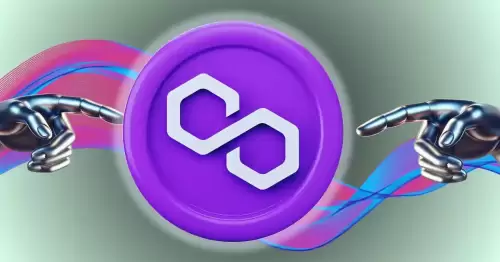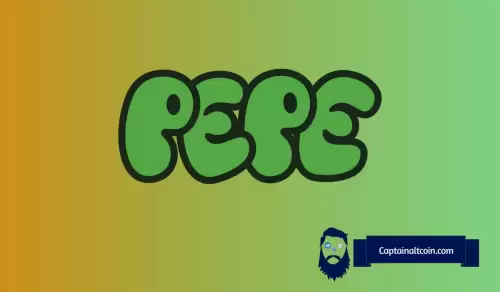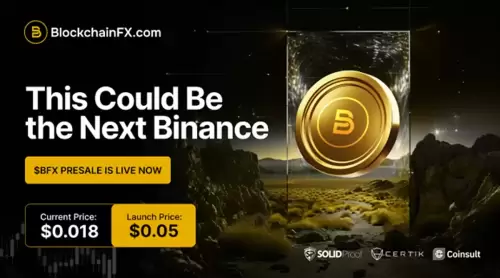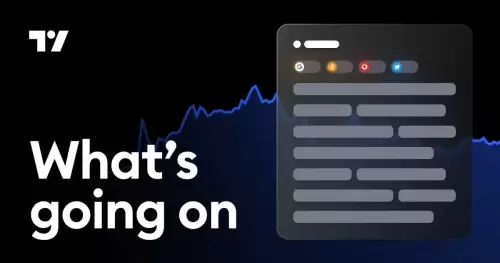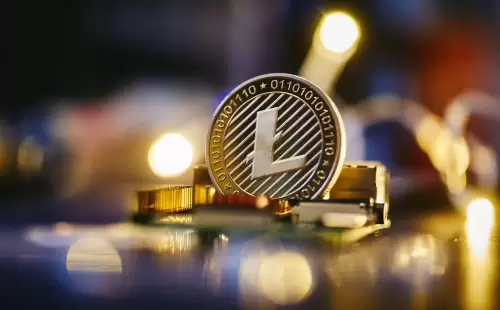 |
|
 |
|
 |
|
 |
|
 |
|
 |
|
 |
|
 |
|
 |
|
 |
|
 |
|
 |
|
 |
|
 |
|
 |
|
Cryptocurrency News Articles
Coin Edition Sits Down with Brickken CEO Edwin Mata to Discuss Tokenizing Over $300M in Real-World Assets
May 20, 2025 at 12:15 pm
Brickken has utilized over $300M in assets globally. What is the key factor for this drive? Also, which asset classes are seeing the most demand?

Coin Edition had the pleasure of sitting down for an exclusive interview with Brickken CEO Edwin Mata to discuss how they’ve managed to tokenize over $300M in real-world assets and the big impact that’s having on global liquidity.
Edwin also delves into how they’re navigating MiCA, using key partnerships, and tackling unique challenges in today’s evolving RWA market.
1. Brickken has utilized over $300M in assets globally. What is the key factor for this drive? Also, which asset classes are seeing the most demand?
Brickken’s tokenization of over $300M+ in assets stems from our full-stack infrastructure that abstracts blockchain complexity, ensures regulatory alignment, and offers rapid deployment for financial instruments such as equity, debt, and revenue-share models. This has driven a surge in demand for tokenized assets, particularly private equity, real estate-backed instruments, and structured private credit, as issuers seek programmable compliance and operational efficiency in fundraising and investor management.
2. How do you see RWA tokenization reshaping global trading and liquidity in the next 5 years.
Over the next five years, RWA tokenization will fundamentally redefine cross-border capital markets by introducing 24/7 programmable liquidity, reducing settlement layers, and lowering issuance and compliance costs. The convergence of tokenized securities and DeFi will enable new secondary markets for illiquid assets, fostering global participation and unlocking trillions in idle capital, especially as legal frameworks and institutional infrastructure mature.
3. How does Brickken’s partnership with platforms like Polygon and BNB Chain enhance in scaling tokenized assets and boost adoption?
Our integration with BNB Chain and Polygon significantly enhances token scalability by enabling low-cost, high-throughput issuance across EVM-compatible networks. These partnerships also provide access to ecosystem support, liquidity channels, and investor networks, accelerating adoption for both SMEs and large institutions seeking compliant tokenization rails and multichain asset exposure. Additionally, this aligns with our Chainlink CCIP roadmap, enabling cross-chain interoperability and liquidity routing, so that asset issuers can capture capital efficiently across multiple blockchain ecosystems through a single issuance layer.
4. With the upcoming EU’s MiCA regulation, how is Brickken prepared, and what implications do you foresee for the wider tokenization space?
Brickken is fully prepared for the regulatory shift accompanying MiCA, despite MiCA not being applicable to securities or financial instruments, which fall under MiFID II. Our core infrastructure is designed to operate within both regimes. For tokenized securities, we maintain alignment with existing EU financial regulations and have tested our models in the European Blockchain Sandbox with 27 regulators. The broader implication is that MiCA will create clear rules for utility tokens and stablecoins, helping delineate regulated perimeters, reduce legal uncertainty, and accelerate adoption. For the tokenization space, this dual-track clarity will encourage institutional entry, especially for platforms that can distinguish between compliant securities tokenization and MiCA-regulated crypto-assets.
5. What unique challenges and opportunities have you encountered in RWA Tokenization?
The primary challenge has been regulatory fragmentation, especially when aligning legal frameworks across jurisdictions for asset issuance and investor onboarding. Additionally, the technological landscape remains fragmented, with numerous chains, token standards, and stablecoins lacking interoperability, and in many countries still lacking legal certainty. However, each challenge has driven us to become more creative, pushing continuous innovation to align with evolving market conditions. Brickken’s modular architecture allows for local compliance adaptation while delivering standardized issuance infrastructure. With wallet abstraction and Chainlink’s CCIP on our roadmap, we are actively unifying fragmented ecosystems to offer a seamless, compliant tokenization experience across jurisdictions and technologies.
6. You’re participating in Token 2049 Dubai — what key themes or trends are you watching closely, and what does this event mean for Brickken’s global strategy?
Token2049 Dubai is a strategic forum for Brickken to engage with global allocators, regulators, and protocol builders. We’re closely watching themes such as institutional DeFi, modular infrastructure for RWAs, and regulatory convergence across the EU, UAE, and Asia. For Brickken, it is an opportunity to deepen partnerships, enter high-growth jurisdictions, and reinforce our position as a foundational layer for asset tokenization globally. It also enables us to meet prospective clients, understand emerging infrastructure and its rationale, and adopt the relevant know-how to embed within our platform ensuring we maintain the state-of-the-art standard our clients expect.
Disclaimer:info@kdj.com
The information provided is not trading advice. kdj.com does not assume any responsibility for any investments made based on the information provided in this article. Cryptocurrencies are highly volatile and it is highly recommended that you invest with caution after thorough research!
If you believe that the content used on this website infringes your copyright, please contact us immediately (info@kdj.com) and we will delete it promptly.
-

-

- POL Price Rebound: Will Consolidation Lead to a Breakout?
- Aug 05, 2025 at 08:02 pm
- After a period of consolidation, Polygon's POL token (formerly MATIC) is showing signs of a price rebound. Key network upgrades and increased on-chain activity suggest growing confidence. Can POL break through resistance?
-

-

-

-

-

-

-
























































